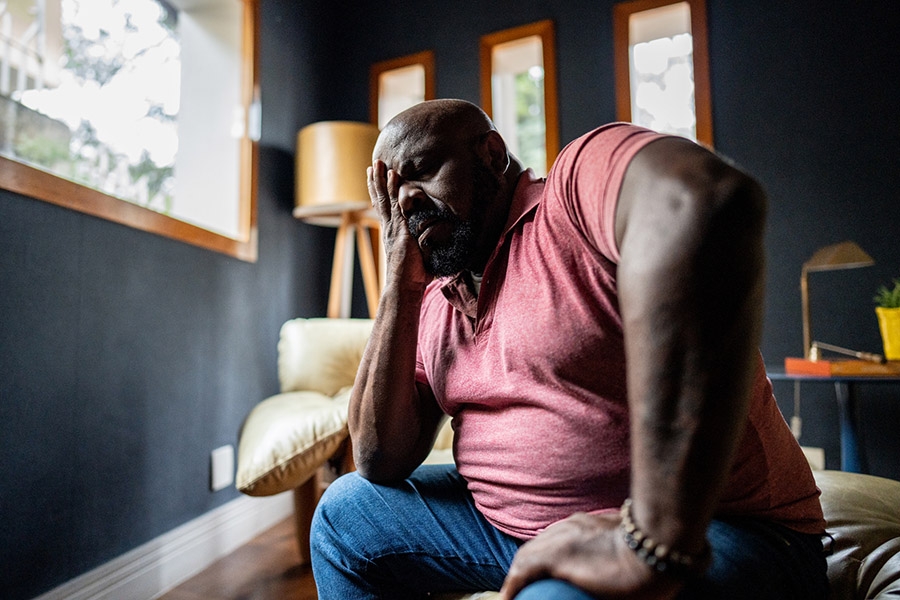Some medical diagnoses almost always cause alarm — even when they may not be serious. Learning you have a lung nodule is one such example.
Many people automatically think “cancer” when they hear the words “lung nodule.” But most of these nodules are benign, which means they are not cancerous, and sometimes do not need to be treated.
As a pulmonologist, I think it’s important that people understand what lung nodules are and when they may need to be biopsied and treated. Here are the questions my patients often ask and the information I share with them.
What’s a lung nodule?
A lung nodule is a small, abnormal area in the lungs. Lung nodules are fairly common and are also sometimes called coin lesions because they have a coin-like shape. On X-rays or computed tomography (CT) scans, they show up as spots or shadows. We find lung nodules in about half of adults who get chest imaging for another reason.
Lung nodules are less than 3 centimeters (or 1.2 inches) in diameter. They don’t usually cause any symptoms because they’re too small to trigger breathing problems.
What causes lung nodules?
These spots are typically the result of previous infections, inflammation, or scar tissue. Lung nodules can also be caused by:
- Benign tumors such as hamartomas
- Autoimmune disorders like rheumatoid arthritis, sarcoidosis, and eosinophilic lung disease
- Bacterial, fungal, or parasitic infections
- Cancer
I remind patients that fewer than 5% of nodules turn out to be cancer. However, if a nodule is cancerous, it’s likely to be at an early stage.
What increases the risk that a lung nodule is cancer?
Most of my patients who have a cancerous lung nodule are older or have a history of smoking cigarettes. However, research shows that about 95% of nodules found on first-time CT scans of current or former smokers between 50 to 75 years old are not cancerous.
Other factors, like a family history of lung cancer or having been around asbestos, can increase the chances that a nodule is cancerous. The larger a nodule, the more likely it is to be malignant.
If a scan finds that I have a lung nodule, what are the next steps?
If I see a lung nodule on an X-ray or CT scan, the first thing I do is compare it to any earlier lung imaging. If there isn’t any earlier imaging, I order another CT scan to see if the nodule has grown or changed.
The time between scans can vary, based on the size, shape, and location of the nodule. Whether it appears to be solid or filled with fluid is also a factor. I usually recommend scans anywhere from every few months to once a year.
Some people become anxious if they feel that they are not being scanned often. However, we’ve found that waiting for the next CT scan is safe and doesn’t impede treatment should the nodule be found to be malignant.
For most people with lung nodules, we just keep up the cycle of active surveillance. We perform scans at regular intervals and make sure nothing is changing. If a nodule doesn’t grow over a two-year period, it’s most likely not cancer. So after two years, it is safe for many people to stop receiving scans.
If at any time a scan shows concerning features or growth of a nodule, we may recommend performing a biopsy.
What does a biopsy involve?
The goal of a biopsy is to take a sample of the lung nodule tissue so that we can determine what it is. There are three kinds of biopsies:
- Needle biopsy: CT scan images or live imaging is used to guide a small needle through the chest to get a sample of the nodule. This technique uses local anesthetic.
- Bronchoscopy: This technique utilizes a thin, fiber-optic tube. The tube is passed through the throat, into the lung. There, a sample of the nodule is collected. This technique uses light or conscious sedation.
- Video-Assisted Thoracoscopic Surgery (VATS) biopsy: Using a special kind of video camera, a tube is inserted through the chest wall to access the nodule. In addition to taking a sample, this method can also enable us to remove the entire nodule. General anesthetic is used with VATS biopsy.
The type of biopsy we recommend depends on the size and location of the nodule, and the person’s medical history. Once we have pathology reports about the tissue, we can quickly move forward with any additional care.
This can all feel overwhelming. But as I remind my patients, many times a lung nodule found on a CT scan isn’t cancer. It’s important that we find out for sure though, so that if it is, treatment can begin early.
Why should I come to Temple Health for lung nodule screenings?
Our Temple Lung Center has a dedicated lung nodule clinic. Our physicians diagnose and monitor lung nodules using the latest technology. We also partner with thoracic surgeons, lung cancer specialists, and other experts to provide personalized, high-quality care.
One of the benefits of lung nodule care at Temple Health is that if additional treatment is needed, it’s right here. People who have a malignant nodule can be seen promptly by the oncologists in our lung cancer program. Or if the diagnosis is interstitial lung disease or chronic obstructive pulmonary disease (COPD), they can be easily directed to the specialists in those areas at Temple Health. The Lung Center works closely with referring physicians, too.
This multidisciplinary approach means that when you come here, you receive individualized care quickly and easily. Whether the next step is monitoring or treatment, Temple Health experts are poised to help.
Helpful Resources
Looking for more information?

